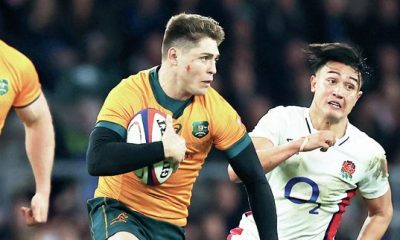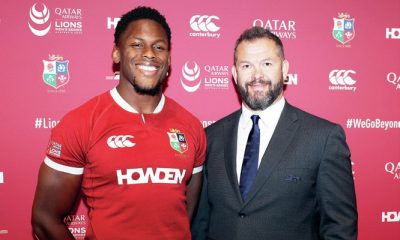 When it comes to making the big decisions that determine whether a series is won or lost, Lions fly-halves have always been in the thick of it as their team’s main playmaker. The man in The Lions No.10 shirt has usually carried more tactical responsibility than any other player on the pitch, deciding when and how the team attacks. He also dictates the tempo at which the team plays, slowing the game down if he opts to kick, or speeding up the flow when he passes the ball wide.
When it comes to making the big decisions that determine whether a series is won or lost, Lions fly-halves have always been in the thick of it as their team’s main playmaker. The man in The Lions No.10 shirt has usually carried more tactical responsibility than any other player on the pitch, deciding when and how the team attacks. He also dictates the tempo at which the team plays, slowing the game down if he opts to kick, or speeding up the flow when he passes the ball wide.
The great Lions fly-halves have had the ability to do both, but what marks them out is an in-built radar which spots the opposition weakness and exploits it ruthlessly. It was certainly the case with Barry John, the mercurial Welshman who The 1971 Lions called “The King”. John had such a sense of self-belief and talent for self-expression that he was hailed as the rugby equivalent of the brilliant Manchester United footballer George Best after they had beaten New Zealand.
Nick Cain, The Rugby Paper’s chief correspondent, says: “John used his footballing gifts to give The Lions a crucial edge against the All Blacks, most notably when his pinpoint tactical kicking for the corners reduced their revered full-back, Fergie McCormick, to a fumbling shadow in the First Test victory in Dunedin. John’s masterclass meant that McCormick never played for New Zealand again.
“John was not renowned for his tackling, but his array of skills in attack, whether ghosting through a gap or threading a scoring pass, or chip, through the eye of a needle, makes him one of the all-time Lions greats.
“Phil Bennett took over the mantle on the unbeaten 1974 Tour of South Africa, and the Llanelli fly-half lost nothing by comparison with John when it came to attacking flair. Bennett’s trademark was the little jink and burst of acceleration that left his markers stranded, cutting open the first line of defence. He orchestrated a Lions attack that left the Springboks reeling and confirmed winger JJ Williams as the most lethal finisher in the game.
“Bennett had a less happy experience as captain of the 1977 Tour to New Zealand, and with The Lions gravitating towards more of a forward-orientated game, relying on tactical kicking in 1980 (South Africa) and 1983 (New Zealand), fly-halves like Gareth Davies, Ollie Campbell, Tony Ward and John Rutherford were not able to flourish.
“A more flexible approach reaped rewards for The 1989 Lions with Rob Andrew taking over from Craig Chalmers after the First Test defeat by Australia. Although Andrew had earned a reputation as a tactical kicker, goal-kicker, and hard-tackling No.10, the Englishman mixed his game sufficiently for Jerry Guscott and Gavin Hastings to score the Second Test tries against the Wallabies which turned the series.
“Jonny Wilkinson’s fortunes in the narrow 2001 defeat in Australia mirrored those of The Lions. After a masterly First Test display, and a good start to the second, it unravelled for Wilkinson – and The Lions – when Joe Roff intercepted to score. A brief interlude from injury problems allowed Wilkinson to return for the 2005 debacle in New Zealand, but he was ruled out of the 2009 Tour to South Africa.
“Instead, it was Stephen Jones who took up the mantle, with the Wales fly-half making an impressive contribution to a midfield which gave the Springboks no end of trouble in a knife edge series.”
Have your say: Tweet us @therugbypaper


British and Irish Lions
From Leicester reject to a British and Irish Lion: Tommy Freeman’s stellar rise
Latest News
Steve Diamond: Franchise league a good idea

International Rugby
Touring Japan with Wales is my goal says Dan Edwards






















You must be logged in to post a comment Login